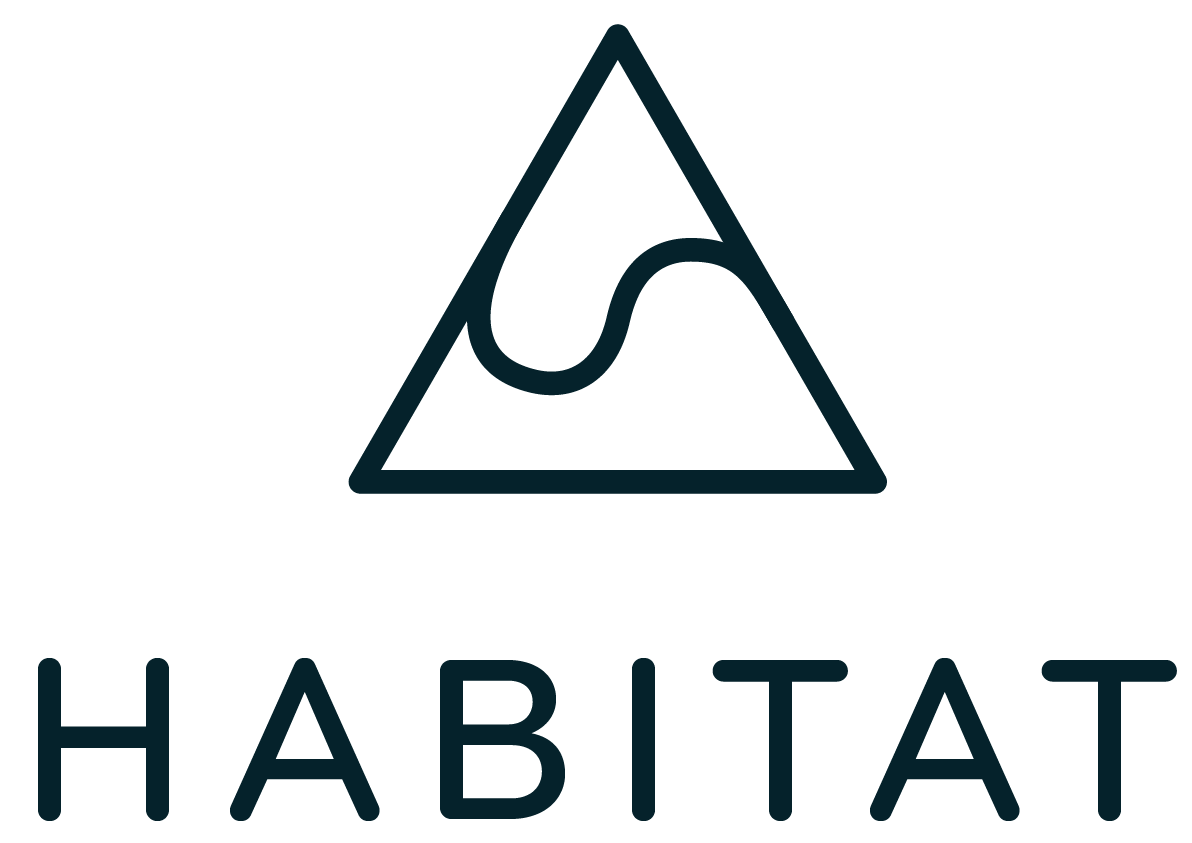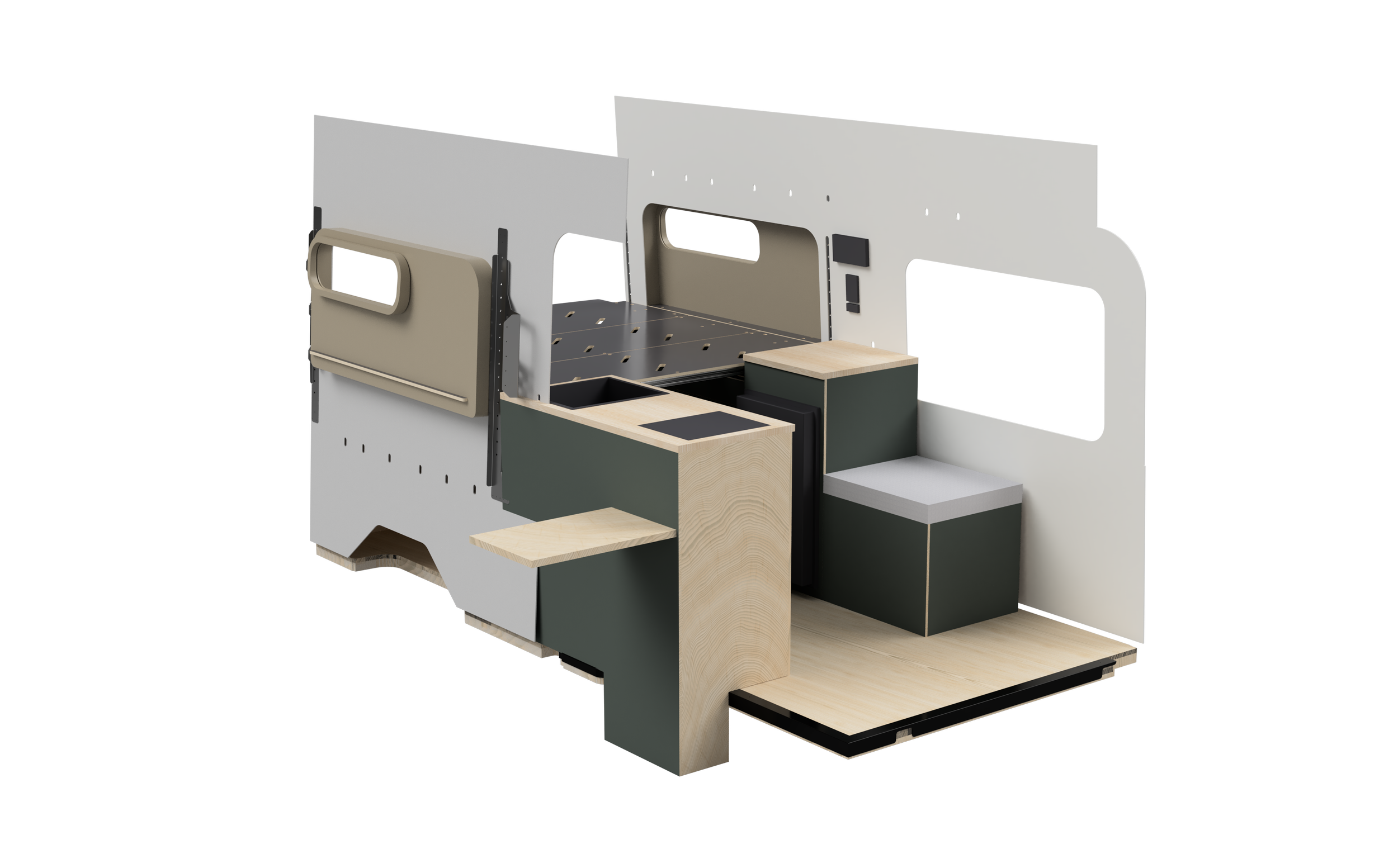From Pixels to Plywood: The power of virtual development in van building.
A big focus of Habitat’s development has, counter intuitively, been virtual.
For a van build company, at first this seems quite strange; this approach is more common for companies developing apps or websites.
Photorealistic render of our latest Transit Build.
For us, laying this digital foundation correctly has been key to crafting better products. Using this digital foundation allows us to rapidly design and test ideas internally, and, externally this allows us to design entire vans remotely, then flat pack and ship the build as a kit.
For a customer, speccing out their van for a conversion is often a very confusing thing. Material swatches help a great deal, but the customer never really has a clear picture of what will be built. Apps such as VanSpace 3D, have made huge strides in this area and helped conversion companies better plan and communicate the build before starting. While that system is a step in the right direction, the level of detail is still relatively simplistic.
Why is our system better?…
We use genuine CAD (Computer Aided Design) files from the vehicles manufacturer. These are the same files used to design and build the vehicle itself. The result therefore is an extremely accurate design space to work within. This means our designs are accurate to within 1mm. This is what allows us to build custom flat pack units without the van present.
This approach is also a massive benefit to the client, both prior to, during and after the build.
Why?
Before the build starts we are able to generate layouts accurate to within 1mm. This means our customers can mock up their vans at home; some have used cardboard boxes, other have taped the floor inside the van. This ultimately allows the customer to spec out exactly the layout they desire and have a full real life understanding of the space that will be created. We are even able to generate VR (Virtual Reality) models that can easily be viewed from a smart phone and overlayed inside your actual van, allowing you to walk around the space virtually.
A top down layout view of a recent build.
Once the layout is complete, it’s time to decide on the colour and style of the van. Again this is an area that can be difficult to visualise. Our system allows us to generate photorealistic renders of the space. We can even simulate lighting conditions, allowing you to understand what the material will look like under warmer or cooler lighting.
During the build these renders and layouts not only provide machinable files for us to build cabinetry from, but act as a full guide for each and every electrical and plumbing connection.
Finally, after the build is complete we maintain a complete digital copy all the vans. This makes future upgrades a breeze. If a clients needs change, we can custom design them a solution and ship flat pack. Of course we are happy to install new components too.
It’s been a long road to get here, but it’s been well worth the effort. If you’re an individual looking to build your own van, check out VanSpace 3D. It’s an excellent tool and easy to use. For us, we have benefited hugely by having our own 3d model. Initially, our goal was simply to be able to build the van just using a computer and a CNC machine, but along the way, the advantages of having such a robust 3d model have been unending. From renders, to VR models, to colour and style it has benefited us every step of the way.
As part of our design process we use these slides to work with clients on colour and design options.







